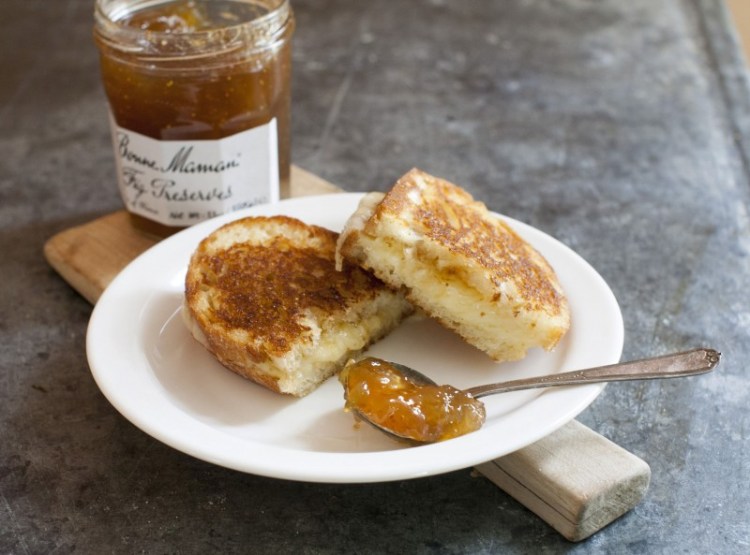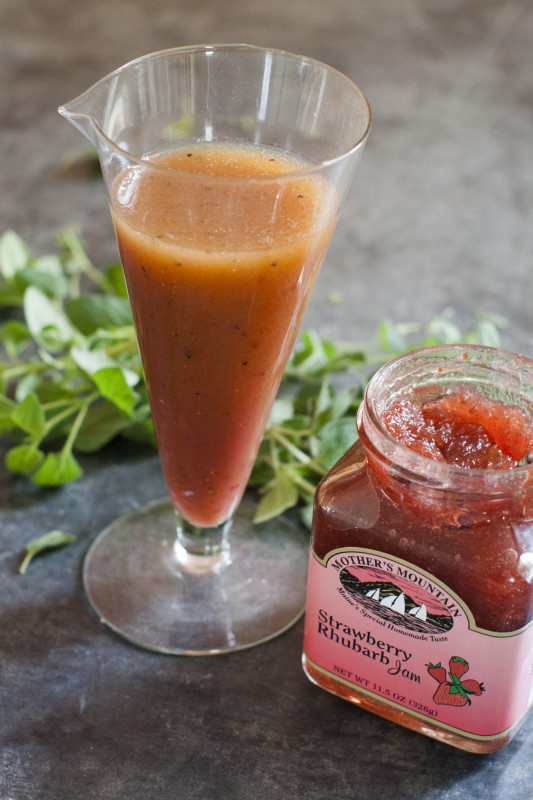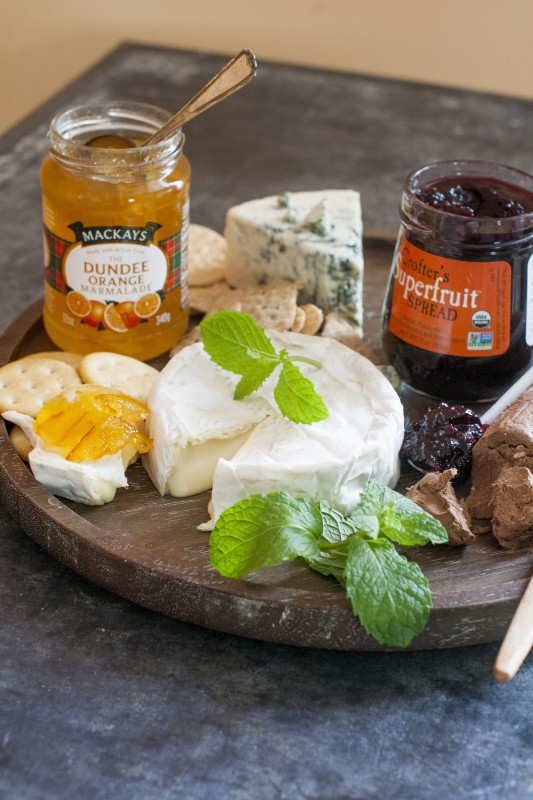It was probably 15 years ago that I discovered the magic that is a nearly empty jar of jam.
Until then, I’d always hated those sticky knuckle moments of scraping the slimy dregs of the jar, hoping I had enough to add that sweet balance so needed by the otherwise leaden smear of peanut butter on my bread.
Then an Italian cook who was supposed to be teaching me pasta making got sidetracked. She wanted a salad to go with our orecchiette, and she wanted to make her own vinaigrette. That’s when she reached for a nearly empty jar of strawberry jam from the refrigerator, dumped in some olive oil, a splash of balsamic vinegar, some salt and pepper. Then she put the cover back on the jar and shook like mad.
Revolutionary? Hardly. But it was delicious. More importantly, it changed my relationship with jam. It wasn’t just a sandwich spread. And it totally made sense. After all, a jar of grape jelly has long been the not-so-secret ingredient for many a potluck meatball. And since that day, I’ve used a dollop of one jam or another in nearly every vinaigrette I’ve made.
And that’s just the start. I regularly turn to jams and jellies for adding oomph to everything, including sweet-and-sour chicken (apricot jam), barbecue pork ribs (seedless raspberry), beef marinades (orange marmalade), ham glazes (blackberry or cherry), sweet-and-savory dips for vegetables and crackers (red pepper jelly), even sandwich spreads (anything goes!). It’s a cheap and easy way to add tons of flavor. If nothing else, you really must try fig jam in a grilled cheese (use extra-sharp cheddar).
Fruit spreads — as the retail category is collectively known — accounts for some $959 million in sales a year in the U.S., where some 1 billion pounds are produced, according to the International Jelly and Preserve Association. And the leading variety? Strawberry, followed by grape, then raspberry.
Not that you’re limited to those basics. The jam and jelly market has exploded with unusual flavors and combinations in recent years. Some of them — such as Bathtub Gin’s cocktail-inspired creations — are particularly suited for spooning into sauces for savory meats or over cheeses.
Knowing I’m not alone in loving this utterly low-brow food trick, I asked the pros for their favorite outside-the-PB&J uses for jams and jellies.
TED ALLEN
“Jams and jellies are valuable shortcuts for sauces and vinaigrettes because those preserves — note that word — are always in the pantry, bright and tart and sweet and ready to go,” Allen, host of Food Network’s “Chopped,” said via email. “They can add a depth, complexity and acidity to a lot of foods without requiring washing or peeling (or, for that matter, a trip to the market).
“Pork, duck and turkey notably benefit from the addition of fruit,” he said.
BED FORD
Ford, the chef behind Ford’s Filling Station in Culver City, California, and the cookbook, “Taming the Feast,” loves jams for their simplicity. It’s part of what makes them so versatile. He particularly likes tomato jam.
“I use it for a seafood cocktail sauce, a mignonette for oysters, or as a lamb burger condiment along with goat cheese, roasted spring onions and apple wood smoked bacon,” he said via email. “Other jams and preserves are well suited to game birds, like apricot. Add a little water to the preserves and spices like cloves, black pepper and cardamom to make a glaze. It’s a great finish to the dish.”
APRIL BLOOMFIELD
Bloomfield, the chef behind the James Beard Award-winning New York restaurant The Spotted Pig, favors adding cranberry jelly to pan sauces for meats. It’s an easy way to gussy up a simple sauce.
“It makes it glossy and adds a touch of sweetness to something gamey like venison,” she said.
DORIE GREENSPAN
We’ve all seen that easy party food of a slab of cream cheese topped with pepper jelly. But baking and French cooking expert Greenspan takes the cheese-and-jam pairing upscale. She tops sheep’s milk cheese with black cherry jam, and mixes raspberry jam with balsamic vinegar and dollops that on sliced mozzarella.
But it isn’t just about adding sweetness.
“I often use bitter orange marmalade as a glaze for roast chicken,” she said. “I like using citrus with chicken. It sharpens and brightens the pan juices, and adding a marmalade glaze ups the citrus pop without really adding sweetness. When the marmalade cooks, its bitter edge becomes more prominent.”
MELISSA D’ARABIAN
d’Arabian, of Food Network’s “Ten Dollar Dinners,” is a fan of the classic party meatball, but she breaks with the grape jelly tradition, preferring raspberry jam, instead. She also likes to spice it up.
“I love to make cocktail meatballs and coat them in a bit of jam jazzed up with some spice (like cayenne or chipotle) and acid (vinegar or lime juice),” she wrote. “That salty-spicy-sweet flavor is a perfect party starter!”
Copy the Story Link
Send questions/comments to the editors.





Success. Please wait for the page to reload. If the page does not reload within 5 seconds, please refresh the page.
Enter your email and password to access comments.
Hi, to comment on stories you must . This profile is in addition to your subscription and website login.
Already have a commenting profile? .
Invalid username/password.
Please check your email to confirm and complete your registration.
Only subscribers are eligible to post comments. Please subscribe or login first for digital access. Here’s why.
Use the form below to reset your password. When you've submitted your account email, we will send an email with a reset code.